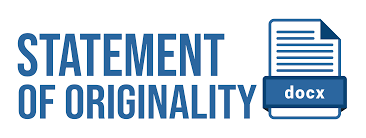Analysis of Nitrogen and Phosphate Content During High and Low Tides in The Karang Asam Besar River in Samarinda City
DOI:
https://doi.org/10.30872/jipt.v3i2.836Keywords:
Nutrient, Eutrophication, Water Quality, Trophic levelAbstract
Rivers are open waters that flow and get input from various human activity discharges such as; settlements, industries that will result in changes in physical, chemical and biological factors in the waters. This can cause damage, disturbance and danger to living things that depend on water resources. This research was conducted in March 2022 in Karang Asam Besar River, Samarinda City, East Kalimantan Province. This study aims to determine the difference in Nitrogen and Phosphate content at high and low tide in Karang Asam Besar River, Samarinda City. Total Nitrogen at the five stations in the Karang Asam Besar River at average values ranged from 13.02-16.45 mg/L and at low tide ranged from 13.20-20.78 mg/L, the highest Nitrogen value at high tide was at Station 2 and the lowest at Station 4, while the highest Nitrogen at low tide was at Station 4 and the lowest at Station 1. Total Phosphate at the five stations at high tide ranged from 0.14-0.19 mg/L and at low tide ranged from 0.18-0.23 mg/L, the highest Total Phosphate value at high tide was at Station 1 and the lowest at Station 4, while the highest Phosphate at low tide was at Station 4 and the lowest at Stations 1, 3 and 5. Nitrogen compounds at each station in the Karang Asam Besar river based on the quality standards of PP No. 82 of 2001, Ammonia has exceeded the quality standard threshold which exceeds 0.5 mg/L. Nitrite does not exceed the quality standard threshold of less than 0.06 mg/L. Nitrate does not exceed the quality standard threshold value of less than 10 mg/L. Phosphate is still within normal levels and there is no pollution by phosphate compounds.
References
Adisasmito, W., & Suciati, S. (2006). Analisis Perencanaan Obat Berdasarkan ABC Indeks Kritis Di Instalasi. Jurnal Manajemen Pelayanan Kesehatan, 9, 19-26.
Effendi, H. (2003). Telaah kualitas air bagi pengelolaan sumberdaya dan lingkungan perairan. Kanisius. Yogyakarta. 257 hlm,
Isnaeni, N., & Purnomo, P. W. (2015). Kesuburan Perairan Berdasarkan Nitrat, Fosfat, dan Klorofil-a di Perairan Ekosistem Terumbu Karang Pulau Karimunjawa. Management of Aquatic Resources Journal (MAQUARES), 4(2), 75-81.
Odum, E.P., 1971, Fundamental of Ecology. W.B. Sounders Company, Philadelphia
Peraturan Pemerintah Nomor 22 Tahun (2021) Tentang Penyelenggaraan Perlindungan dan Pengelolaan Lingkungan Hidup.
Sahabuddin, H., Harisuseno, D., & Yuliani, E. (2014). Analisa status mutu air dan daya tampung beban pencemaran Sungai Wanggu Kota Kendari. Jurnal Teknik Pengairan: Journal of Water Resources Engineering, 5(1), 19-28.
Sasongko, E. B., Widyastuti, E., & Priyono, R. E. (2014). Kajian kualitas air dan penggunaan sumur gali oleh masyarakat di sekitar Sungai Kaliyasa Kabupaten Cilacap. Jurnal Ilmu Lingkungan Undip, 12(2), 72-82.
Wiriani, E. R. E. (2018). Analisis Kualitas Air Sungai Batanghari Berkelanjutan Di Kota Jambi: Analisis Kualitas Air Sungai Batanghari Berkelanjutan Di Kota Jambi. Jurnal Khazanah Intelektual, 2(2), 219-241.
Downloads
Published
Issue
Section
License
Copyright (c) 2024 Nusantara Tropical Fisheries Science (Ilmu Perikanan Tropis Nusantara)

This work is licensed under a Creative Commons Attribution-NonCommercial-ShareAlike 4.0 International License.








